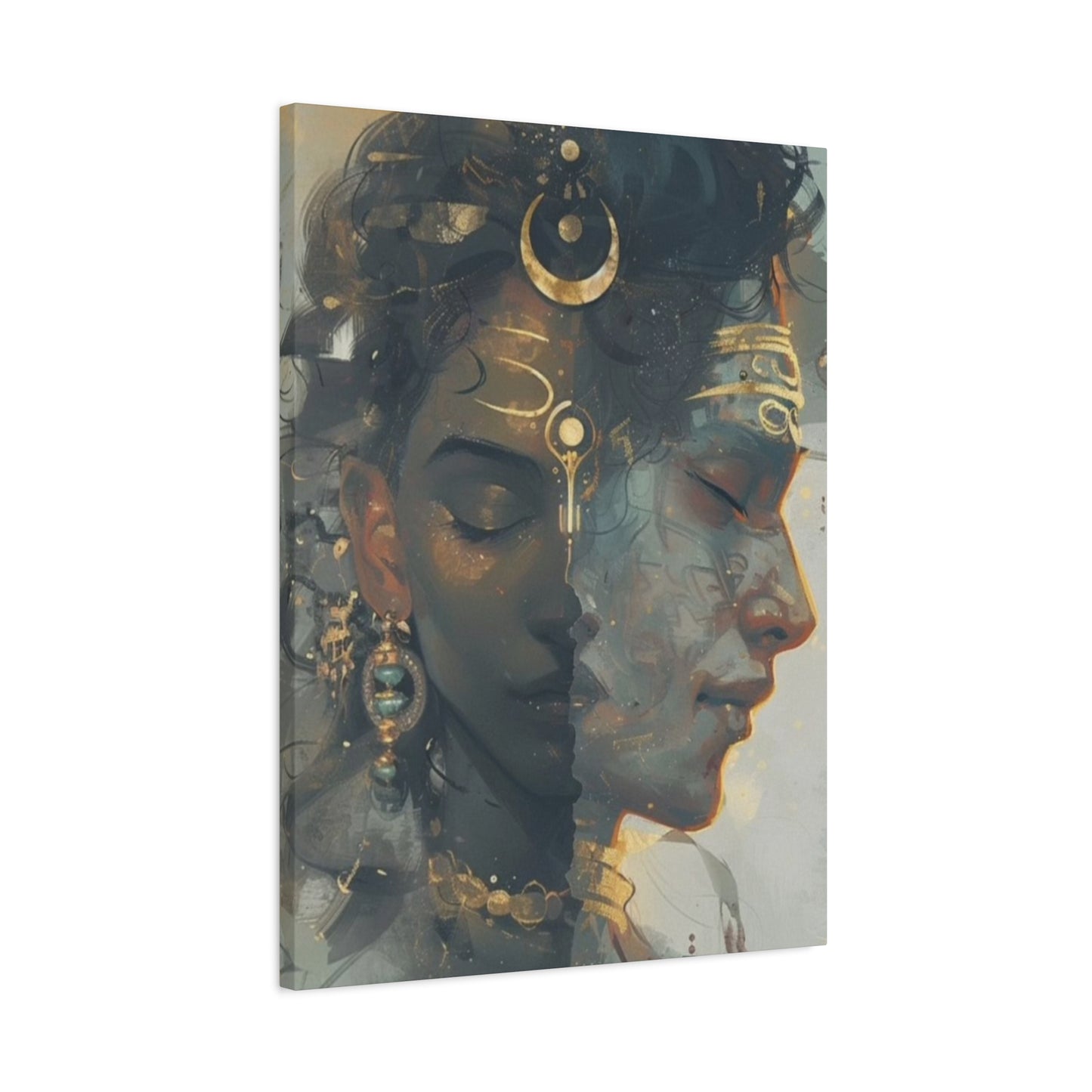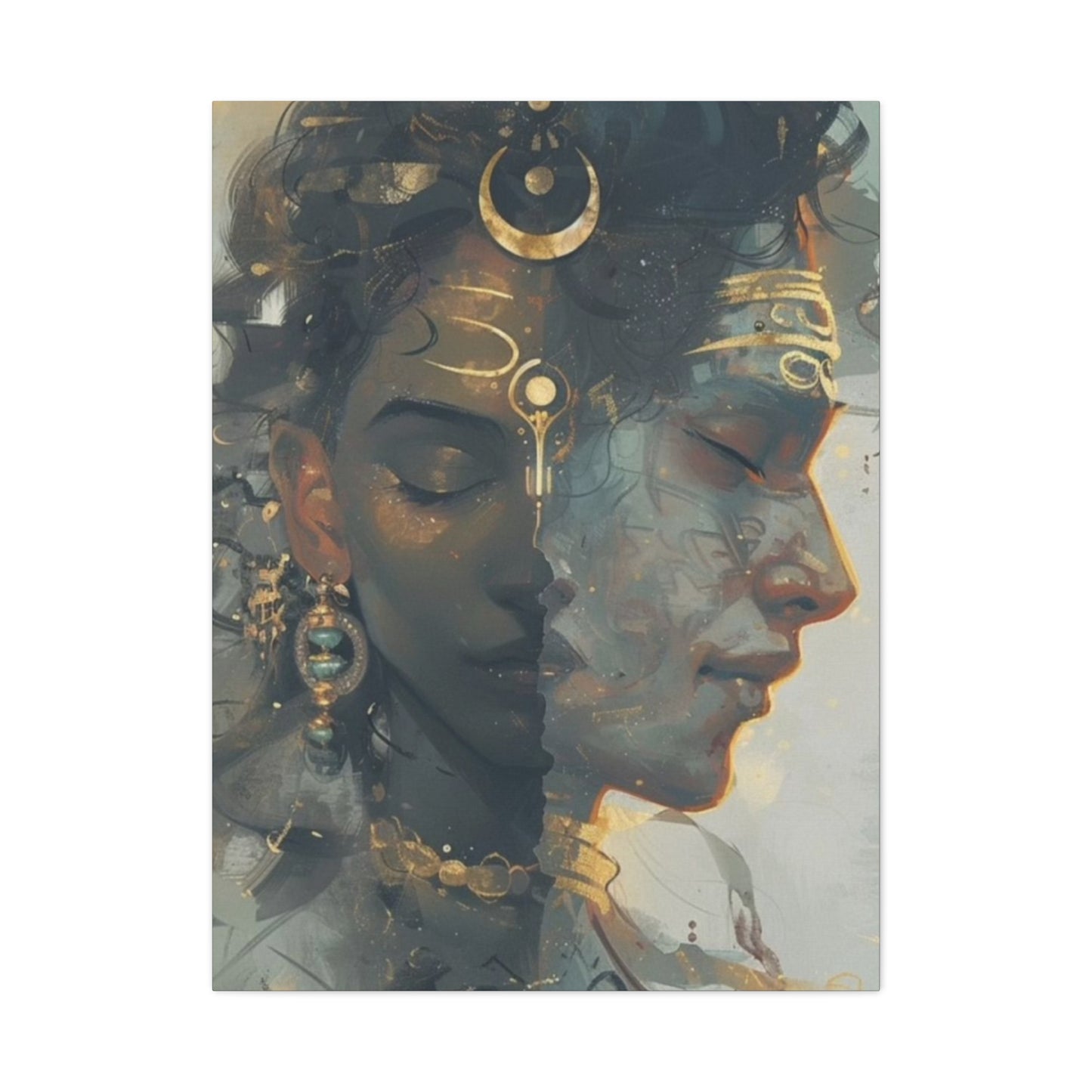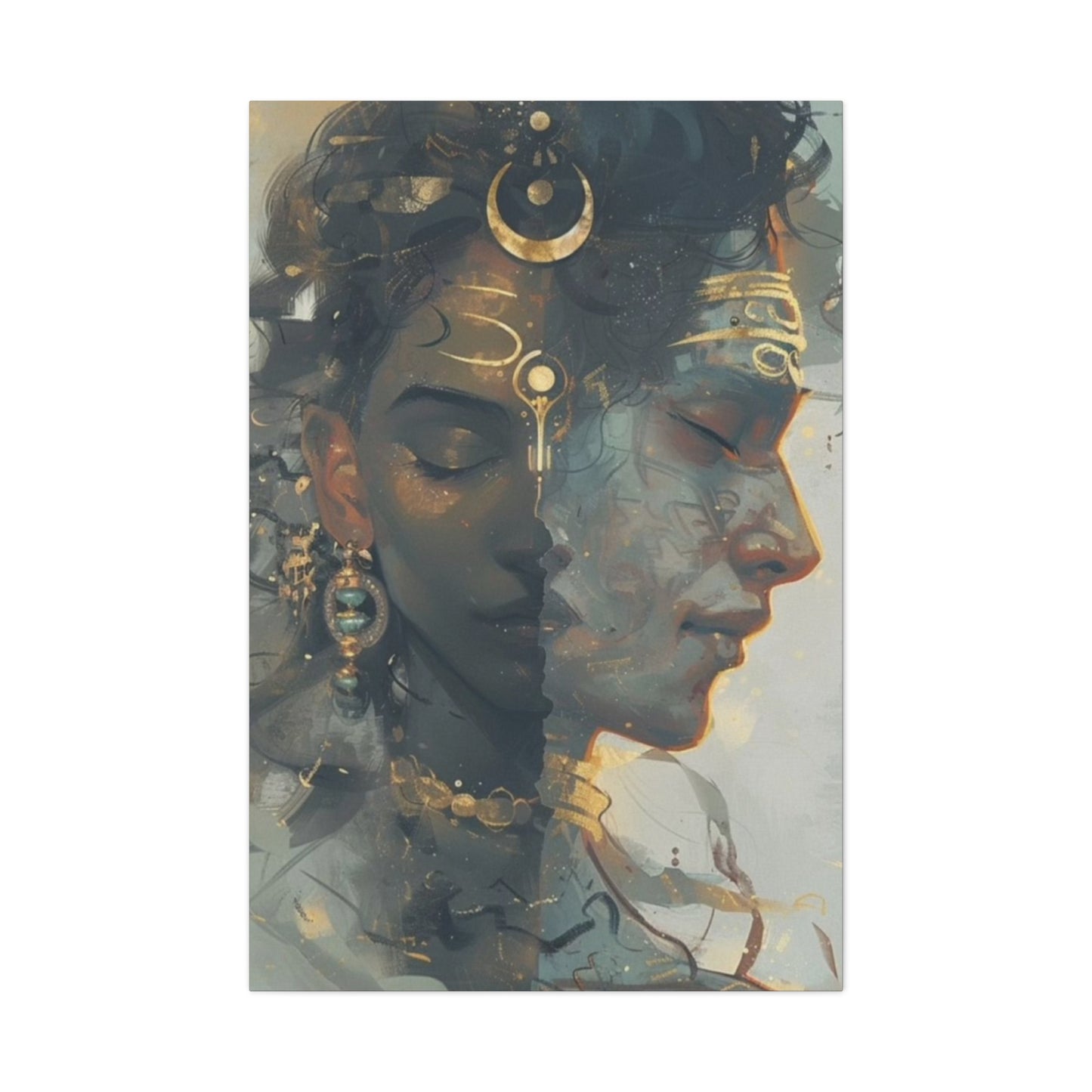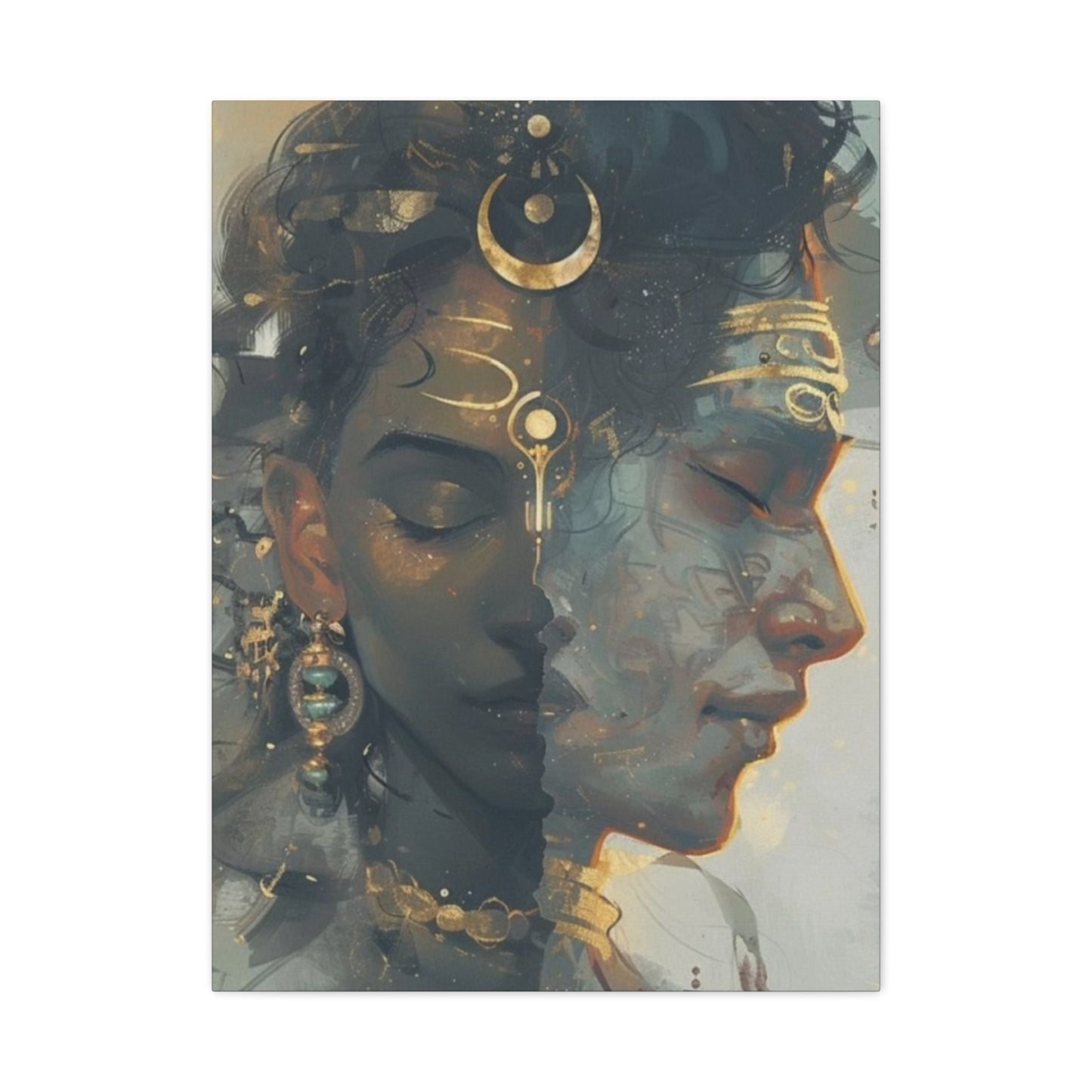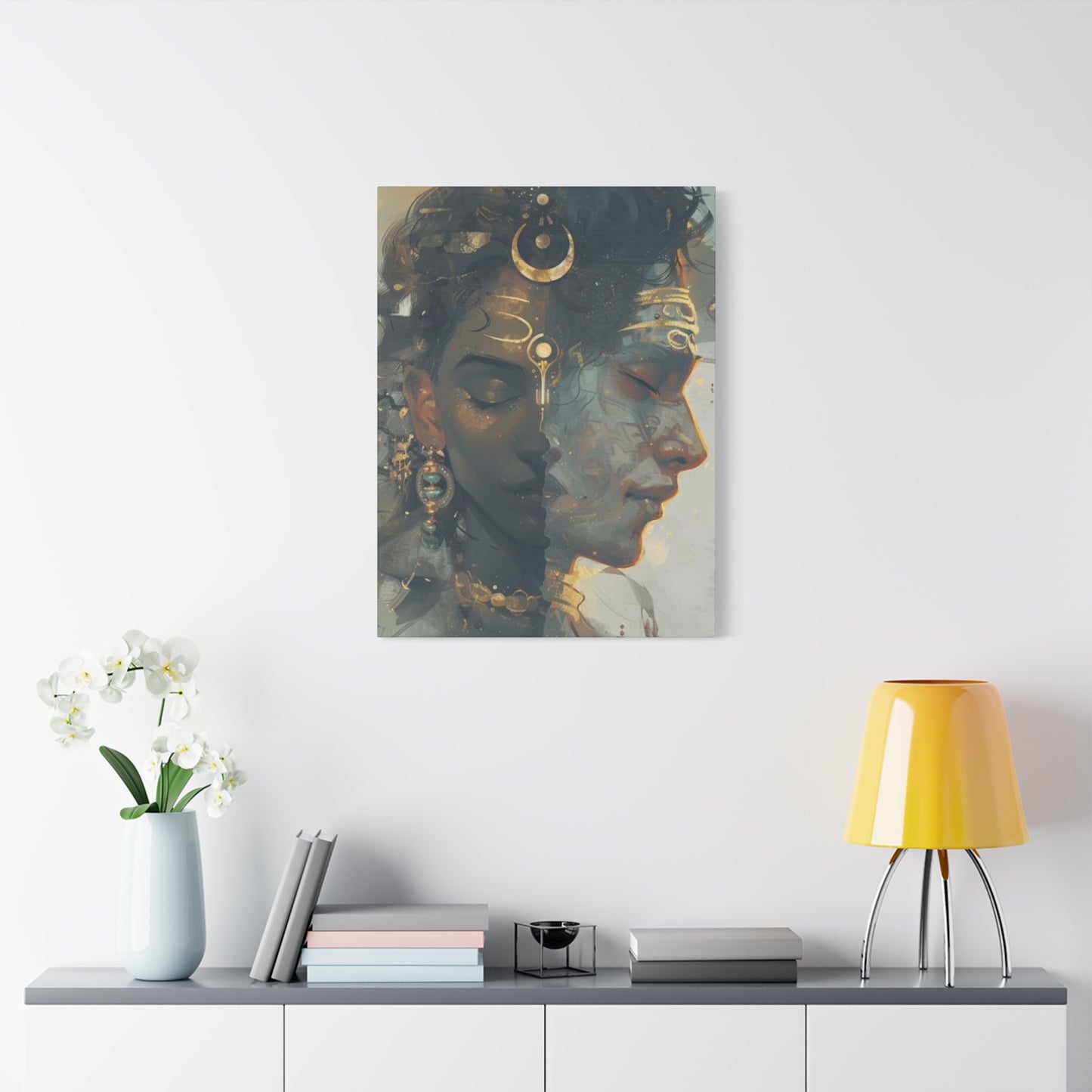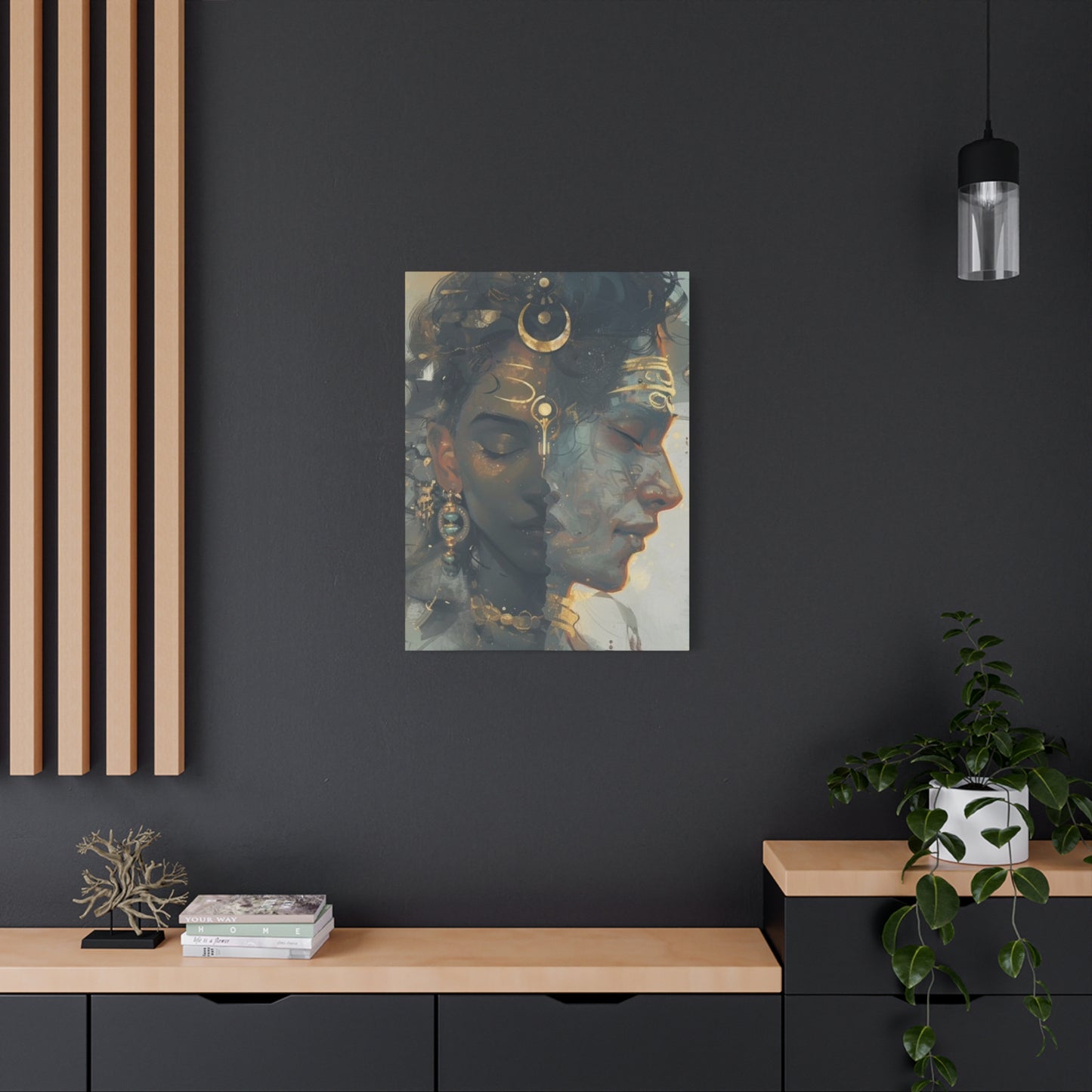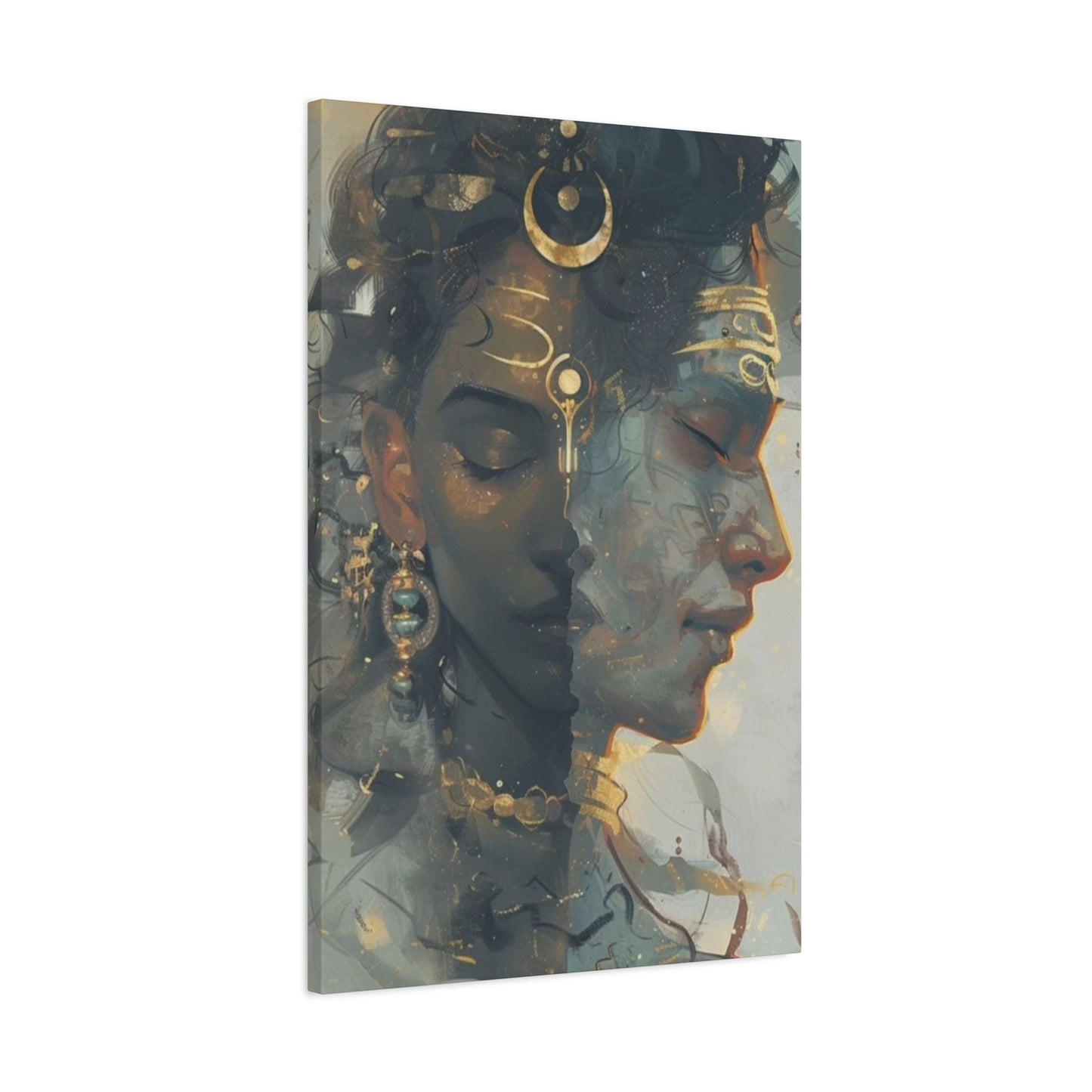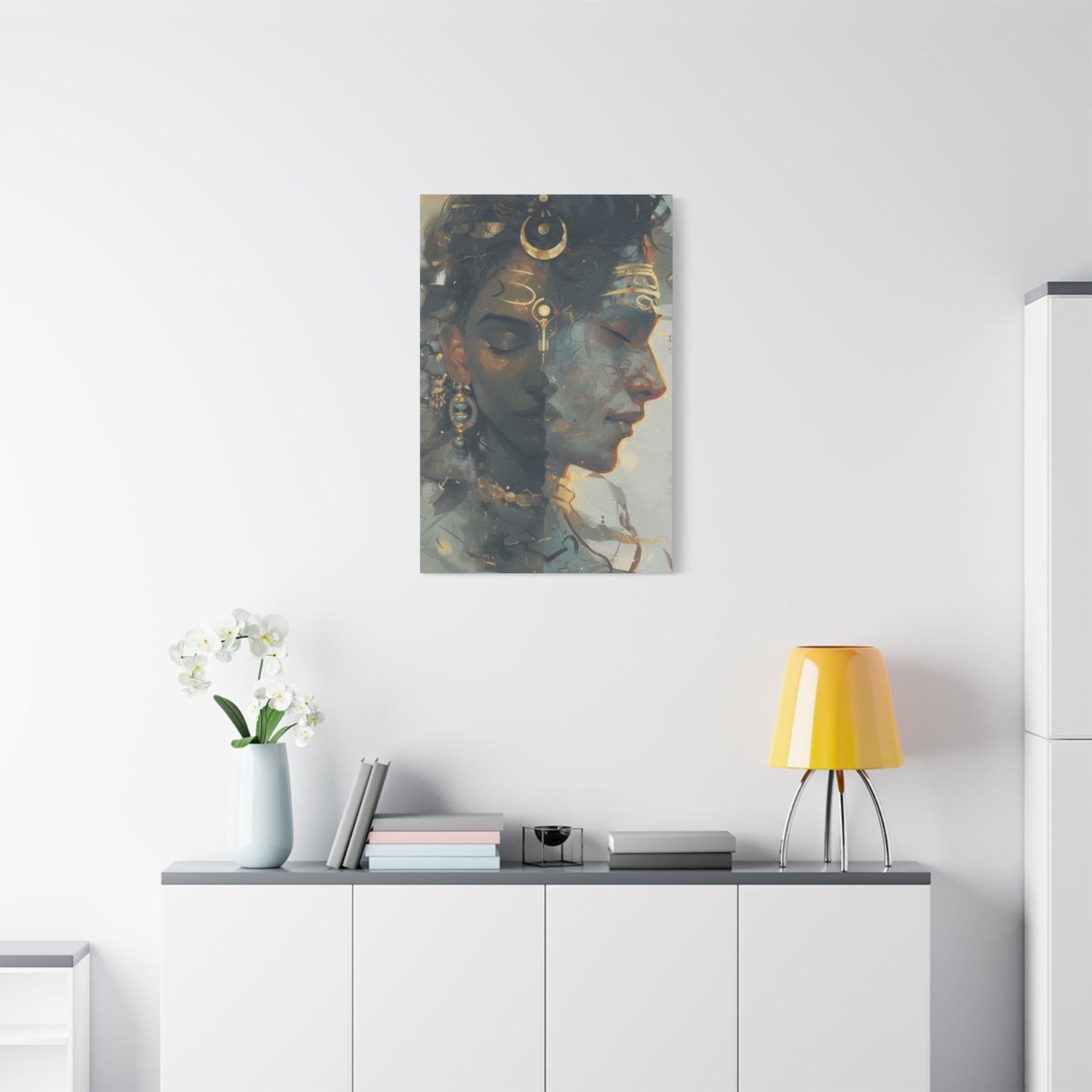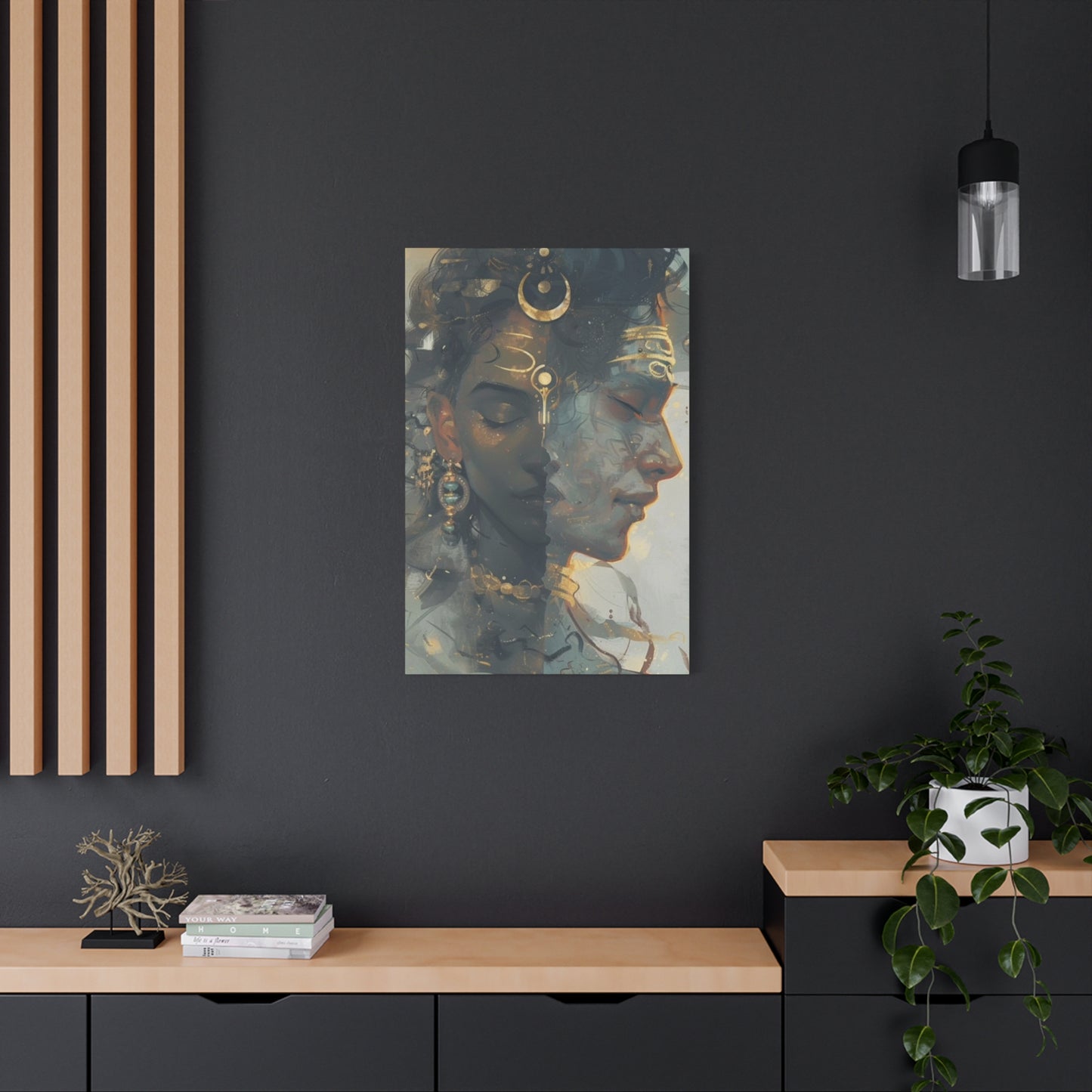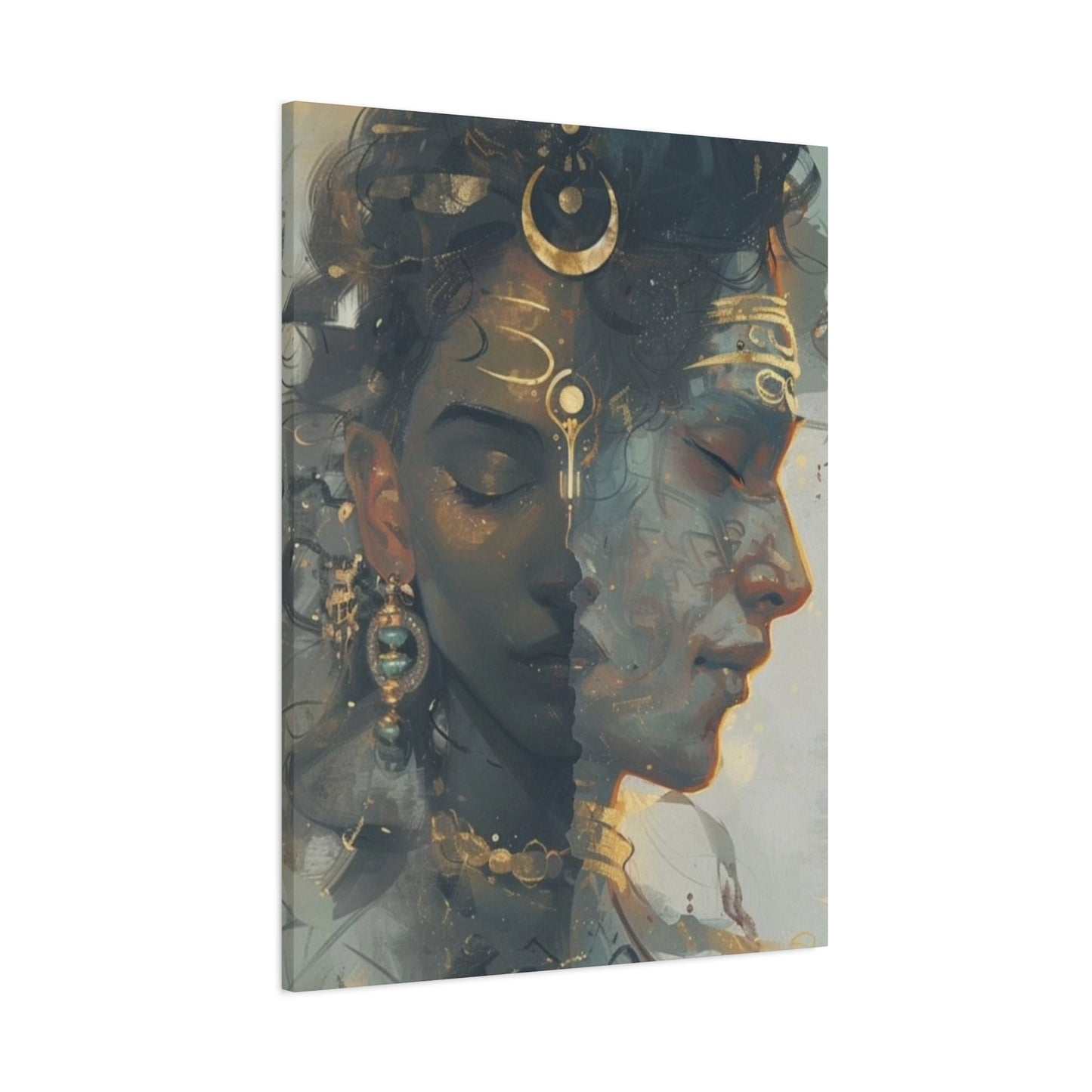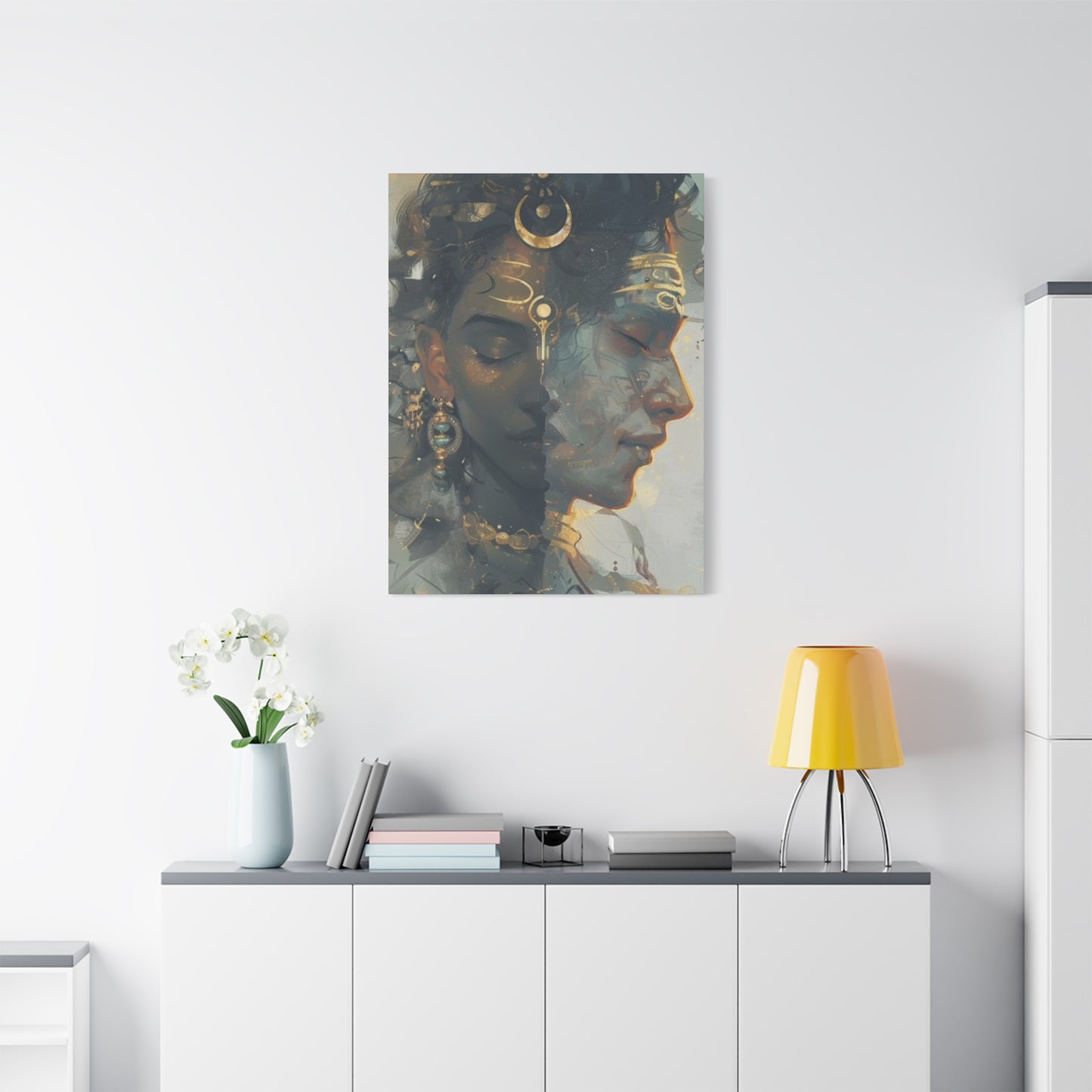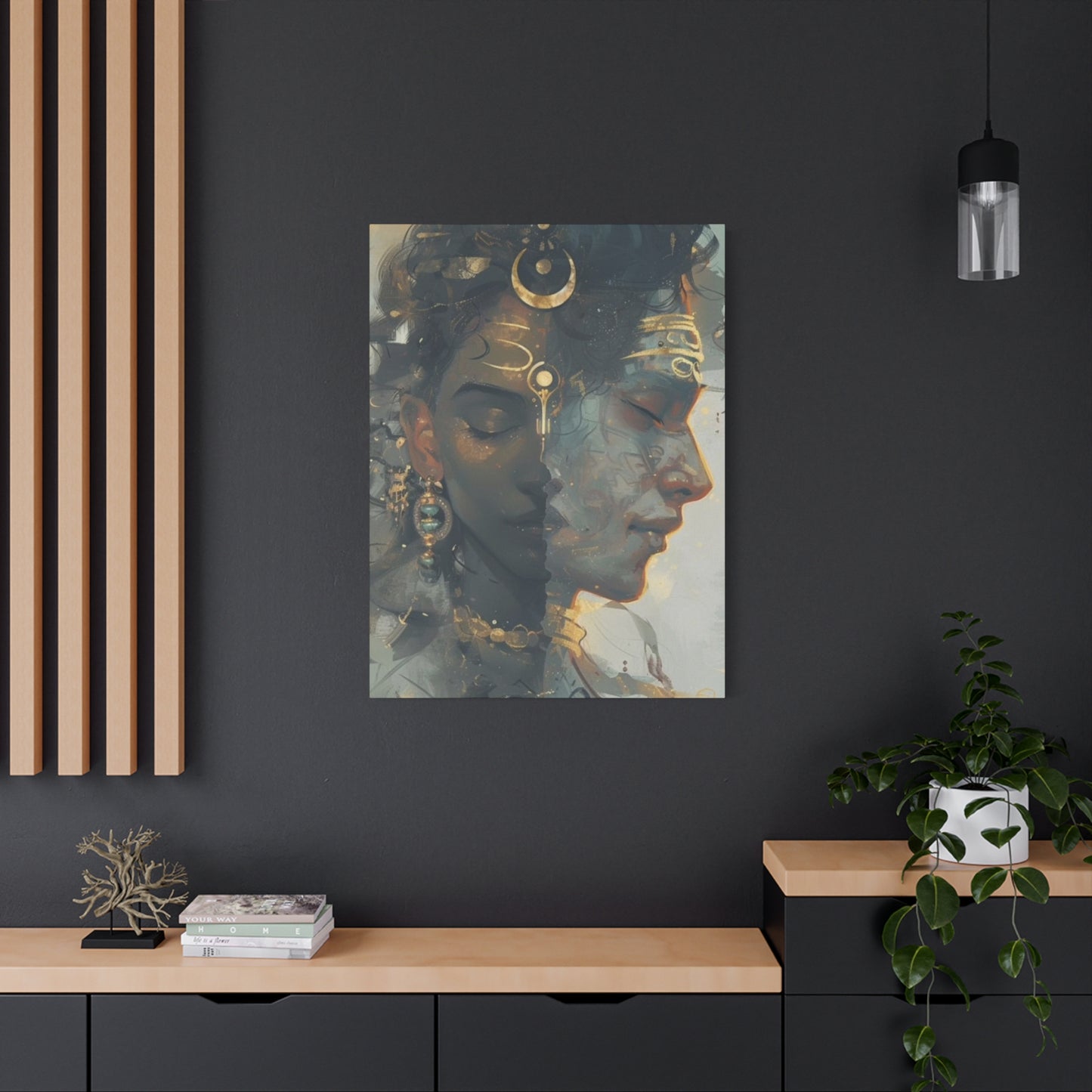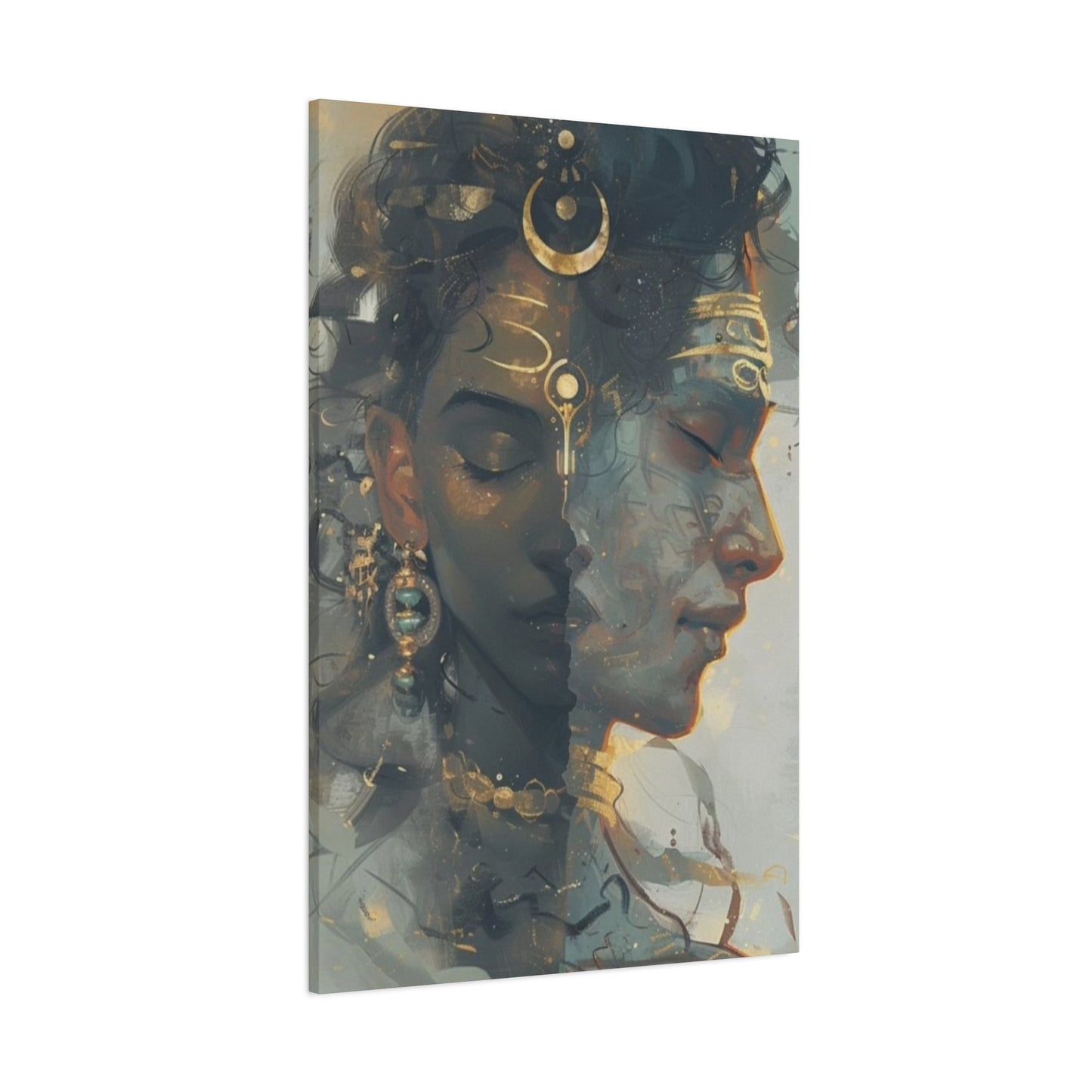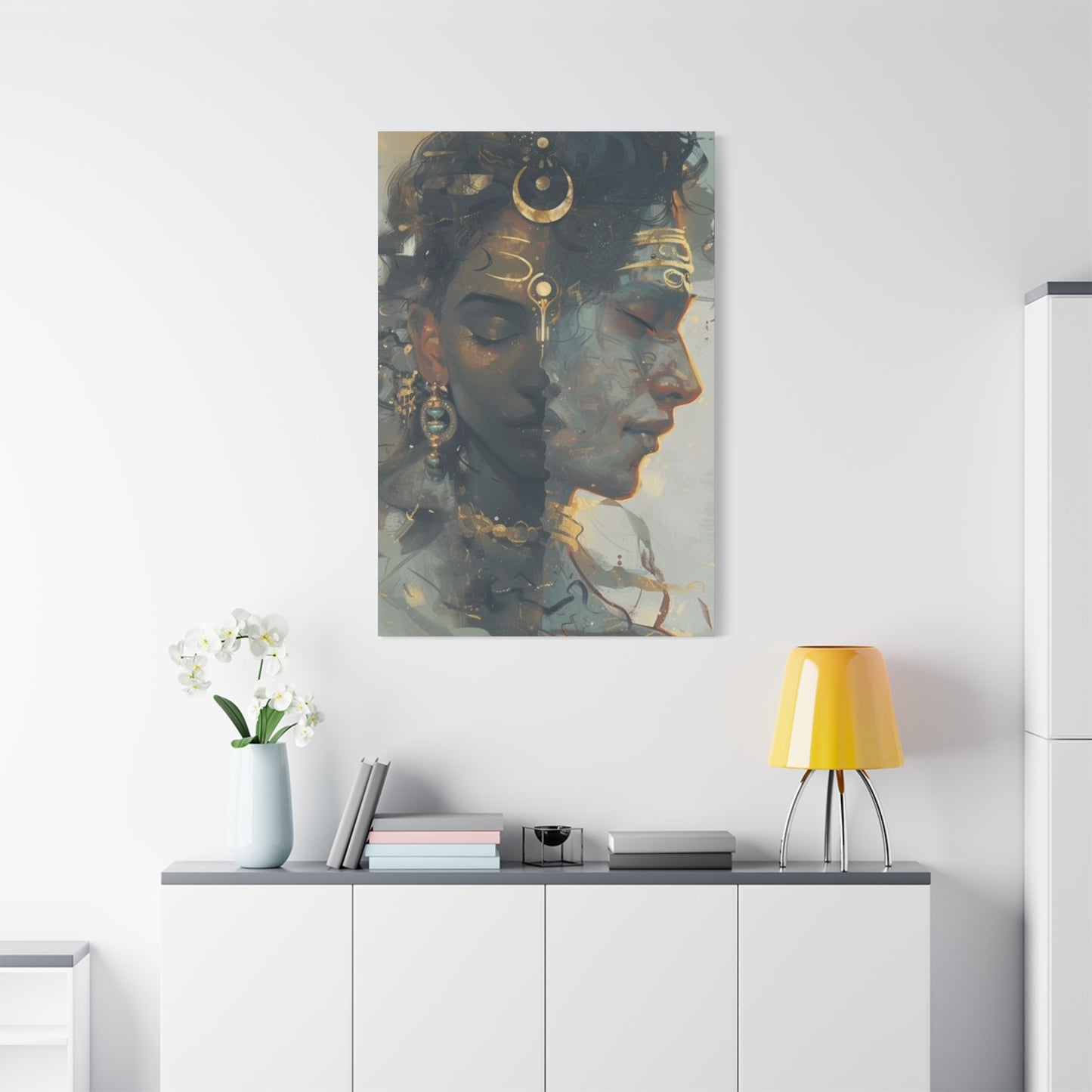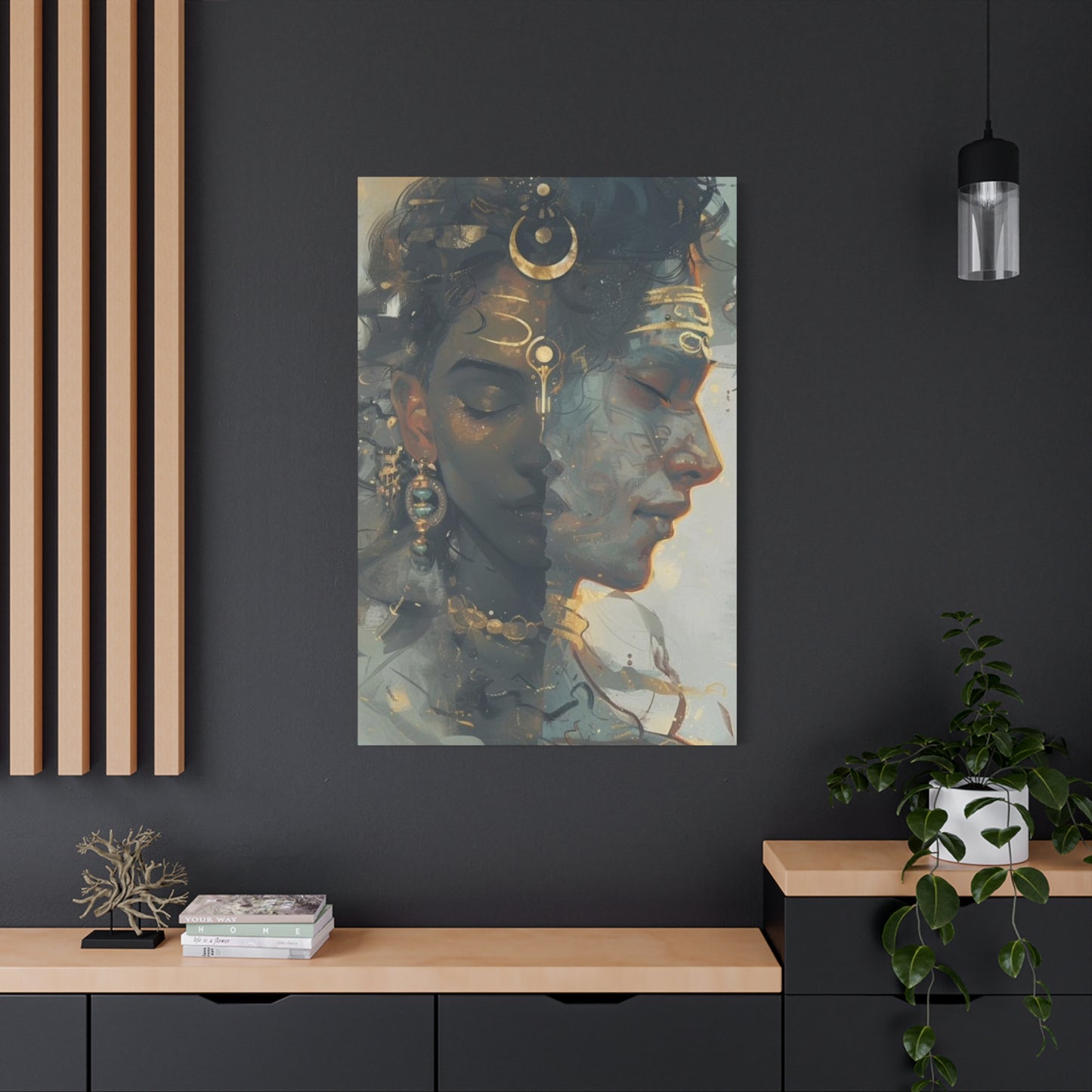Divine Focus: How Shiva Wall Art Inspires Reflection and Inner Peace
The ancient wisdom of spiritual traditions teaches us that our surroundings profoundly influence our mental, emotional, and spiritual wellbeing. When we incorporate sacred imagery into our homes, we create portals to higher consciousness and invite divine presence into our daily lives. Among the most powerful spiritual symbols in Hindu tradition stands Lord Shiva, the destroyer and transformer, whose image carries profound energy that can elevate any space from ordinary to extraordinary. The practice of adorning walls with representations of this supreme deity has been cherished for millennia, offering both aesthetic beauty and spiritual benefits that resonate through every corner of our homes.
Throughout this comprehensive exploration, we will journey through the multifaceted world of incorporating sacred imagery of the destroyer and transformer into your living spaces. From understanding the deeper spiritual significance behind each representation to discovering practical ways to integrate these powerful symbols into contemporary interior design, this guide offers invaluable insights for anyone seeking to create spaces that nurture the soul while delighting the eye. Whether you are a devoted practitioner seeking to deepen your spiritual practice or simply someone drawn to the profound beauty and tranquility that sacred imagery can bring, the following insights will help you transform your home into a sanctuary of peace, power, and divine connection.
The relationship between sacred art and personal transformation cannot be overstated. When we surround ourselves with images that remind us of higher truths and spiritual principles, we create constant opportunities for reflection, meditation, and growth. The visual presence of the supreme consciousness in our homes serves as a perpetual reminder of the qualities we wish to cultivate within ourselves: stillness amidst chaos, strength tempered with compassion, destruction of the ego, and the eternal dance of creation and dissolution that defines existence itself.
Bring Divine Energy with Shiva Art
The presence of sacred imagery depicting the lord of transformation in your home creates an energetic shift that can be felt immediately upon entering a space. This is not merely superstition or wishful thinking, but rather an acknowledgment of how visual symbols influence our subconscious mind and emotional state. When we place representations of the cosmic dancer in our homes, we invite the qualities he embodies to permeate our environment and influence our consciousness.
The energy associated with the destroyer of ignorance is both fierce and gentle, powerful yet peaceful. This paradoxical nature makes representations of this deity particularly potent for creating balanced living spaces. In the ancient science of energy flow within structures, the placement of sacred images is considered crucial for maintaining harmony and promoting positive vibrations throughout a home. Artwork depicting the lord of meditation can help neutralize negative energies, promote mental clarity, and create an atmosphere conducive to spiritual growth and personal transformation.
When selecting pieces to bring this divine energy into your space, consider the specific qualities you wish to emphasize. Representations showing the lord in deep meditation emphasize tranquility and inner stillness, making them ideal for areas where you practice contemplation or relaxation. Images depicting the cosmic form with multiple arms and symbolic objects highlight the multidimensional nature of consciousness and the ability to handle multiple aspects of life with grace and power. The dancing form celebrates the dynamic nature of existence and can energize creative spaces or areas where you engage in physical practices.
The materials used in creating these sacred representations also influence the energy they emit. Traditional paintings on canvas carry a warmth and depth that resonates with the heart chakra, while metal sculptures project a more grounded, protective energy that can anchor a space. Wooden carvings bring the natural element of earth into your home, creating a connection to the fundamental forces of nature that the lord of the elements commands. Glass or crystal representations can amplify light and energy, making them particularly effective in meditation spaces or areas where you seek clarity and illumination.
Color selection plays a significant role in the energetic impact of sacred artwork. Deep blues and purples connect to the higher chakras and promote spiritual awareness and intuition. Whites and silvers emphasize purity, clarity, and the transcendent nature of consciousness. Rich golds and bronzes bring a sense of divine majesty and abundance, while earth tones ground the energy and create a feeling of stability and connection to the physical realm. Understanding these subtle influences allows you to choose pieces that not only appeal to your aesthetic sensibilities but also support your spiritual and emotional wellbeing.
The positioning of sacred imagery within your home deserves careful consideration. According to traditional wisdom, placing such representations in the northeast section of your home or meditation room is particularly auspicious, as this direction is associated with spiritual energy and divine grace. However, the most important factor is that the artwork is positioned where you will see it regularly and where it can serve as a focal point for contemplation and inspiration. A beautifully framed representation in your living room can set the tone for your entire home, while a smaller piece in your bedroom can provide comfort and protection during sleep and upon waking.
Creating a dedicated space around your sacred artwork enhances its energetic impact. Consider surrounding the piece with elements that complement and amplify its spiritual significance. Fresh flowers, especially lotus blossoms or marigolds, honor the traditional practices of devotion and add natural beauty and fragrance to the space. Incense holders positioned nearby allow you to engage multiple senses in your spiritual practice, with sandalwood, frankincense, or jasmine creating atmospheres conducive to meditation and prayer. Candles or oil lamps provide the element of fire, symbolizing the transformative power of the destroyer of illusion and creating a warm, inviting ambiance that draws the eye and heart toward the sacred image.
The practice of consciously engaging with your sacred artwork transforms it from mere decoration into a powerful spiritual tool. Taking a few moments each day to pause before the image, whether to offer a silent prayer, contemplate its symbolism, or simply acknowledge the divine presence it represents, deepens your connection to the spiritual dimensions of life. This regular practice creates a ritual structure that supports consistency in your spiritual development and serves as an anchor point during times of stress or uncertainty. The simple act of stopping to appreciate the sacred artwork reminds you to pause, breathe, and reconnect with what truly matters beneath the surface chaos of daily existence.
Meditative Spaces with Shiva Wall Decor
Creating a dedicated area for meditation and contemplative practices within your home dramatically enhances your ability to maintain a consistent spiritual routine. The visual environment of such spaces profoundly affects the quality and depth of meditation, making the selection of appropriate wall decoration a matter of significant importance. Imagery depicting the lord in deep absorption serves as both inspiration and instruction, reminding practitioners of the ultimate goal of meditation while providing a focal point that helps quiet the wandering mind.
The lord of yogis represents the perfection of meditative absorption, often depicted seated in perfect stillness upon a tiger skin or sacred grass, eyes half-closed in the inward gaze that characterizes deep meditation. When we place such images in our meditation spaces, we create a visual anchor that supports our practice in multiple ways. First, the image serves as a reminder of what we are working toward: the state of complete stillness and awareness that transcends ordinary consciousness. Second, it provides a point of focus when the mind becomes restless, offering something beautiful and meaningful upon which to rest our attention. Third, it creates an energetic field that supports the cultivation of stillness and inner peace.
When designing a meditative space enhanced with sacred wall decoration, consider the overall atmosphere you wish to create. The space should feel separate from the everyday activities of the household, a sanctuary where worldly concerns can be set aside and inner work can proceed without distraction. Soft, natural lighting creates a gentle ambiance that supports relaxation without inducing drowsiness. If natural light is limited, consider warm-toned bulbs or salt lamps that provide illumination without harsh glare. The sacred artwork should be positioned at eye level when you are in your meditation posture, allowing you to easily gaze upon it without strain or discomfort.
The size and style of the artwork should complement the scale of your meditation space. In smaller rooms or corners, an oversized image can feel overwhelming and create a sense of confinement rather than peace. Conversely, a tiny picture in a large room may lack the visual presence needed to serve as an effective focal point. Aim for proportions that feel balanced and harmonious, neither dominating the space nor getting lost within it. The style of the artwork should resonate with your personal aesthetic while maintaining the sacred quality that makes it appropriate for spiritual practice. Some practitioners prefer highly detailed, traditional representations that include multiple symbolic elements, while others find that simpler, more minimalist depictions better support their meditation by reducing visual complexity.
Color psychology plays an important role in creating effective meditation spaces. Cool colors like blues, greens, and purples tend to promote relaxation and inner focus, making them ideal choices for artwork in contemplative environments. These hues are associated with the higher chakras and naturally draw our awareness upward and inward. Warm colors like oranges and reds can be energizing but may be too stimulating for deep meditation, though they can be appropriate in spaces dedicated to more active practices like mantra recitation or devotional singing. Neutral tones create a calm, grounded atmosphere that works well for a variety of meditation styles.
The symbolic elements commonly included in depictions of the lord of meditation offer rich material for contemplation and understanding. The crescent moon adorning his matted locks represents the cyclical nature of time and the mind, reminding us that thoughts and emotions rise and fall like the tides. The third eye positioned in the center of the forehead symbolizes higher perception and the ability to see beyond surface appearances to the underlying reality. The serpent coiled around his neck represents kundalini energy, the spiritual force that lies dormant at the base of the spine until awakened through yogic practices. The trident held in one hand symbolizes the three fundamental qualities of nature and the power to transcend them. Understanding these symbols enriches your meditation practice by providing layers of meaning to contemplate during and after your sessions.
Maintaining the sanctity of your meditation space requires consistent attention and intention. Regular cleaning keeps the physical environment pure and serves as a spiritual practice in itself, an act of devotion and respect for the sacred purpose of the space. Refreshing flowers or incense offerings maintains the energetic vitality of the area and creates an atmosphere that feels alive and consecrated rather than stale or abandoned. Limiting the use of the space to spiritual activities preserves its special quality and prevents the energies of everyday concerns from infiltrating your sanctuary. When you reserve a particular area exclusively for meditation and prayer, you create a powerful association in your mind and nervous system that automatically triggers a shift toward meditative awareness when you enter that space.
The practice of beginning and ending each meditation session by acknowledging the presence represented in your sacred artwork creates a ritual structure that enhances the effectiveness of your practice. This need not involve elaborate ceremonies or complex prayers; a simple bow, a moment of silent gratitude, or a heartfelt expression of your intention suffices to mark the transition between ordinary and sacred time. This ritualistic framing helps signal to your subconscious mind that you are entering a special state of consciousness, making it easier to settle into meditation and more difficult for everyday concerns to intrude upon your practice.
Shiva in Abstract: Modern Wall Art Ideas
The intersection of ancient spiritual symbolism and contemporary artistic expression creates exciting possibilities for integrating sacred imagery into modern homes. Abstract representations of the lord of transformation allow for creative interpretation while maintaining the essential energy and symbolism associated with this powerful deity. This approach appeals particularly to those who appreciate minimalist aesthetics or whose interior design favors contemporary styles that might clash with traditional religious imagery.
Abstract interpretations of sacred themes work by distilling the essence of a symbol or concept into its most fundamental visual elements. Rather than depicting the deity in realistic human form with all traditional attributes and ornamentation, abstract approaches might use flowing lines to suggest the cosmic dance, geometric shapes to represent the structure underlying reality, or bold splashes of color to evoke the destructive and creative energies associated with transformation. These stylized representations allow the artist and viewer to engage with spiritual themes in a more interpretive, personal manner, creating space for individual meaning-making and reflection.
One popular abstract approach involves representing the cosmic dancer through dynamic, flowing forms that suggest movement and energy without depicting a literal figure. Sweeping curves and spirals can evoke the spinning motion of the eternal dance while maintaining a thoroughly modern aesthetic. Bold color choices like electric blues, vibrant purples, or dramatic blacks and whites create visual impact that works well in contemporary spaces while still conveying the power and mystery associated with the lord of transformation. These abstract dancing forms work particularly well in spaces dedicated to creative activities or physical practices, where their dynamic energy can inspire and motivate.
Geometric abstraction offers another avenue for representing sacred themes in contemporary visual language. The use of mandalas, sacred geometrical patterns, and symbolic shapes can evoke the mathematical precision underlying cosmic order while maintaining a clean, modern appearance. Triangular forms pointing downward can represent the element associated with the deity, while circular patterns suggest the cyclical nature of existence and the eternal wheel of time. Combining multiple geometric elements in balanced compositions creates complex visual interest while retaining the minimalist clarity that characterizes contemporary design.
Color field paintings inspired by spiritual themes provide a more meditative, contemplative form of abstract sacred imagery. Large areas of color, perhaps with subtle gradations or layering, can create a sense of infinite space and transcendent consciousness. Deep indigo blues suggest the midnight sky of meditation, while silvery grays evoke the ashes that traditionally adorn the ascetic form of the lord. These minimalist color-focused pieces work especially well in spaces dedicated to yoga or meditation, where their simplicity supports rather than distracts from inner work.
The integration of symbolic elements in abstract compositions allows for the inclusion of traditional iconography within a contemporary visual framework. The third eye might be represented by a simple circular form or mandala pattern centrally positioned in the composition. The crescent moon could appear as a curved element among more abstract forms. The serpent might be suggested through sinuous lines that wind through the piece. The trident could be simplified to three vertical elements or an angular geometric form. By abstracting these symbols, artists create pieces that speak to those familiar with the tradition while remaining accessible and aesthetically pleasing to viewers without specific knowledge of the symbolism.
Mixed media approaches combine various materials and techniques to create textured, layered abstractions that add dimensional interest to wall spaces. Combining paint with metallic leaf, fabric, or found objects creates visual and tactile complexity that rewards closer examination. These pieces can incorporate traditional materials like sandalwood powder, ash, or sacred herbs into the artwork itself, literally embedding spiritual elements into the physical piece. The result is artwork that bridges the gap between traditional devotional objects and contemporary art, satisfying both aesthetic and spiritual needs.
Digital art and photography offer exciting possibilities for creating abstract sacred imagery that reflects our technological age. Manipulated photographs of traditional statuary, digitally generated fractal patterns inspired by cosmic principles, or layered digital compositions that combine multiple symbolic elements can create striking modern interpretations of ancient themes. These digital creations can be printed on various media, from traditional canvas to metal or acrylic, allowing for customization that perfectly matches your interior design needs.
The beauty of abstract approaches to sacred imagery lies in their ability to function on multiple levels simultaneously. For those well-versed in the symbolism and significance of the deity, abstract representations offer familiar themes presented in fresh, thought-provoking ways that deepen understanding through recontextualization. For visitors to your home who may not share your spiritual interests or background, abstract sacred artwork simply appears as attractive, well-executed contemporary art that enhances your space aesthetically. This dual functionality makes abstract approaches particularly suitable for main living areas or professional spaces where you want spiritual support without creating an atmosphere that might make some visitors uncomfortable.
The Power of Tranquility: Shiva in Art
The representation of perfect stillness and serene composure in artistic depictions of the lord of meditation offers a powerful antidote to the frenetic pace and constant stimulation of modern life. In a world where we are bombarded with information, demands, and distractions from the moment we wake until we close our eyes at night, images that embody deep peace and unshakeable calm provide visual refuge and emotional respite. The power of such tranquil imagery lies not merely in its aesthetic appeal but in its capacity to influence our nervous system, shift our mental state, and remind us of the possibility of inner stillness even amidst external chaos.
The depiction of the lord seated in profound meditation, face serene and body perfectly still, communicates a state of being that many of us glimpse only briefly during our most successful meditation sessions or in rare moments of complete presence. By placing such images prominently in our homes, we create constant reminders of this possibility and gentle invitations to access that state ourselves. The visual impact of perfect stillness has a quieting effect on the observer's mind, similar to how watching gently flowing water or flickering candles naturally induces relaxation and introspection.
The artistic techniques used to convey tranquility in sacred imagery deserve careful consideration when selecting pieces for your home. Soft, blended colors rather than harsh contrasts create a gentle visual experience that soothes rather than stimulates. Smooth, flowing lines rather than jagged or angular forms promote a sense of ease and harmony. Balanced, symmetrical compositions provide psychological satisfaction and a sense of order that the mind finds inherently calming. The overall mood or feeling-tone of the piece should be one of peace, stillness, and inward focus rather than dynamic action or intense emotion.
The facial expression depicted in representations of the meditative lord proves crucial in determining the overall impact of the piece. The half-closed eyes characteristic of deep meditation suggest a state that is neither fully outward-focused nor completely withdrawn, but rather perfectly balanced between awareness of the external world and attention to inner states. This particular gaze can serve as instruction for our own meditation practice, reminding us to maintain this delicate balance rather than becoming lost in thoughts or drowsy from excessive inward focus. The subtle smile often depicted on the lips suggests a contentment and peace that comes from inner realization rather than external circumstances, a quality we can aspire to cultivate in our own lives.
The surrounding elements and background details in tranquil sacred imagery contribute significantly to the overall atmosphere. Depictions showing the lord seated in natural settings near flowing streams, beneath ancient trees, or against mountain backdrops connect the divine presence to the natural world and remind us that nature itself serves as a powerful support for meditation and spiritual practice. Simple, uncluttered backgrounds focus attention on the central figure and prevent visual distraction, while elaborate settings filled with symbolic details provide rich material for contemplation but may be less suitable for spaces dedicated to actual meditation practice.
The size and positioning of tranquil sacred imagery affects its psychological impact on inhabitants and visitors. Large-scale pieces create a powerful presence that can anchor and set the tone for an entire room, making them ideal for main living areas or primary meditation spaces. Medium-sized pieces work well in bedrooms, home offices, or reading nooks where you want the supportive presence of peaceful imagery without it dominating the space. Smaller pieces can be grouped together to create a gallery wall or placed in intimate spaces where you will view them up close, allowing you to appreciate fine details and subtle expressions.
Lighting considerations prove especially important when displaying artwork intended to evoke tranquility. Harsh, bright lights can undermine the peaceful quality of the imagery, while thoughtful, subtle illumination enhances the meditative atmosphere. Natural daylight provides the most authentic viewing experience but should be indirect to avoid glare and prevent damage to the artwork over time. For evening viewing, warm-toned accent lighting can create an intimate, contemplative atmosphere that honors the sacred quality of the image. Dimmable lights offer flexibility to adjust the ambiance according to your needs and activities throughout the day.
Creating a relationship with tranquil sacred imagery goes beyond simply purchasing and hanging a piece on your wall. Taking time to regularly sit with the image, allowing your gaze to rest upon it softly without intense focus, creates opportunities for the qualities it embodies to influence your own state of being. This practice need not be formal or lengthy; even a few moments of contemplative viewing can shift your mood and perspective, providing a reset button for your nervous system when stress begins to accumulate. Over time, you may find that simply glancing at the peaceful image triggers an automatic relaxation response, as your brain and body learn to associate the visual stimulus with states of calm and centeredness.
Nataraja: Shiva in Dance and Motion
The cosmic dancer represents one of the most dynamic and philosophically profound artistic representations in spiritual traditions worldwide. This iconic form depicts the lord engaged in the eternal dance of creation and destruction, simultaneously bringing the universe into being and dissolving it back into undifferentiated consciousness. The imagery is simultaneously beautiful and complex, visually striking while encoding deep metaphysical teachings about the nature of reality, time, and consciousness. Incorporating representations of this dancing form into your home brings an energy of transformation, creativity, and dynamic balance that can invigorate and inspire.
The traditional representation shows the dancer within a ring of flames, one foot firmly planted on the figure of ignorance while the other is raised in a gesture of grace and liberation. Multiple arms hold symbolic objects and make meaningful hand gestures, each element carrying specific philosophical significance. The matted locks fly outward, suggesting the wild, uncontrolled aspect of divine power, while the serene facial expression maintains perfect equanimity despite the violent motion of the dance. This juxtaposition of extreme activity and absolute stillness embodies a profound spiritual teaching: that true peace comes not from the cessation of activity but from remaining centered and unmoved by circumstances regardless of how chaotic they appear.
The ring of flames surrounding the dancing figure represents multiple concepts simultaneously. At one level, it symbolizes the process of cosmic creation and destruction, the endless cycle of universes coming into and passing out of existence. At another level, it represents the fire of knowledge that burns away ignorance and illusion. The flames also suggest transformation, the necessary destruction of old forms to make space for new creation, a reminder that spiritual growth requires the death of old identities and limited self-concepts. This rich symbolism makes imagery of the cosmic dancer particularly appropriate for spaces dedicated to creative work, personal development, or transformative practices.
When selecting representations of the dancing form for your home, consider the artistic style and the emotional impact you wish to create. Traditional bronze sculptures, whether antique or contemporary reproductions, carry a weight and permanence that grounds the dynamic energy of the dance. These three-dimensional representations can be dramatically lit to create moving shadows that suggest the ongoing nature of the cosmic dance. Wall-mounted metal sculptures offer similar aesthetic benefits with easier installation and positioning flexibility. Paintings and prints allow for more variation in size, color palette, and artistic interpretation, from highly traditional representations that adhere closely to iconographic specifications to more contemporary or abstract versions that emphasize movement and energy over precise symbolism.
The positioning of cosmic dancer imagery requires thoughtful consideration due to its powerful, dynamic energy. This is not quiet, meditative energy but rather transformative, active force that stimulates creativity and change. Such imagery works beautifully in creative studios, home offices, or spaces dedicated to physical practices like yoga or dance. In these contexts, the dynamic energy supports and enhances the activities taking place. However, in bedrooms or meditation spaces where calm and stillness are desired, the activated quality of cosmic dancer imagery might prove too stimulating and could interfere with relaxation or sleep.
The symbolic objects held in the multiple hands of the cosmic dancer each carry specific meanings worth understanding to fully appreciate the imagery. The drum in one hand represents sound, the primordial vibration from which all creation emerges, reminding us that the universe is fundamentally energy in various states of vibration. The flame in another hand symbolizes destruction and purification, the necessary dissolution of form that balances the creative aspect. The hand raised in the gesture of fearlessness provides protection and reassurance, suggesting that despite the apparent violence of the cosmic dance, there is nothing to fear for those who understand its true nature. The hand pointing toward the raised foot indicates the path to liberation, the escape from the endless cycle of creation and destruction through spiritual realization.
The foot planted firmly on the figure representing ignorance beneath it conveys a powerful message about the role of spiritual practice in liberating consciousness from delusion. This is not a gentle, gradual process but rather a forceful subjugation, a conquering of the forces within us that keep us bound to limited identities and perspectives. The raised foot toward which one hand points represents release, the upward movement of consciousness freed from the weight of ego and ignorance. This dynamic interplay between the grounded and raised feet symbolizes the spiritual journey itself: the firm establishment in practice and discipline required to overcome inner obstacles, followed by the grace of liberation that lifts us beyond our previous limitations.
Incorporating cosmic dancer imagery into contemporary interior design requires balancing the traditional, sacred quality of the representation with the aesthetic demands of modern spaces. Black and white artistic renderings can bridge traditional and contemporary styles, providing the symbolic power of the image while maintaining the clean, minimal aesthetic popular in modern design. Large-scale photographs of ancient sculptures create dramatic visual impact while honoring the traditional forms. Abstract interpretations that suggest the spinning motion and dynamic energy without depicting the figure literally allow the incorporation of the concept into spaces where more traditional religious imagery might feel out of place.
The energy of cosmic dancer representations can be balanced and complemented through thoughtful selection of surrounding decor elements. Pairing dynamic dancer imagery with calmer, more meditative representations in adjacent spaces creates a flow between active and passive energies that reflects the totality of spiritual life. Incorporating natural elements like plants, water features, or natural fiber textiles near cosmic dancer imagery grounds the high, transformative energy and connects it to the earth element. Using colors associated with specific chakras or energy centers can direct and channel the activated energy in particular ways: blues and purples for spiritual awareness, greens and pinks for heart-centered transformation, yellows and oranges for creative and personal power.
Minimalist Shiva Art for Modern Homes
The aesthetic philosophy of minimalism, which emphasizes simplicity, essential elements, and the elimination of unnecessary ornamentation, finds an unexpected harmony with certain aspects of spiritual practice and sacred imagery. The lord of ascetics, who renounces worldly possessions and attachments in pursuit of ultimate truth, embodies minimalist principles at a profound level. Creating sacred artwork that honors both minimalist design sensibilities and spiritual significance requires distilling imagery to its most essential, powerful elements while maintaining the capacity to inspire and uplift.
Minimalist approaches to sacred imagery often employ simple line drawings that capture the essential form and energy of the deity without excessive detail or ornamentation. A few carefully placed curves can suggest the seated meditation posture, while a single line drawing of the distinctive hairstyle instantly communicates identity without requiring elaborate depiction. The power of such minimalist representations lies in their ability to communicate meaning efficiently, allowing the viewer's mind to complete the image and engage imaginatively with the subject. This participatory aspect of minimalist art can actually deepen the viewer's relationship with the imagery, as they actively construct meaning rather than passively receiving a complete representation.
Monochromatic color schemes epitomize minimalist aesthetics while creating powerful visual impact. Black line drawings on white backgrounds provide stark, dramatic contrast that works beautifully in contemporary spaces. These high-contrast pieces command attention through their boldness while maintaining the simplicity that defines minimalist style. White on black reversals create a different mood, with the sacred imagery emerging from darkness in a way that can feel mysterious and profound. Single color fields in blues, grays, or earth tones offer more subtle variations that can blend seamlessly with carefully curated interior color palettes while still maintaining visual interest.
The use of negative space proves crucial in effective minimalist sacred artwork. Empty areas surrounding the central imagery are not merely background but active elements of the composition that give the subject room to breathe and the viewer's eye places to rest. In spiritual terms, this negative space can represent the void from which all creation emerges, the formless consciousness that underlies and supports all manifest forms. Understanding and appreciating negative space as an integral part of the composition rather than merely empty background marks a shift in perception that aligns with deeper spiritual insights about the relationship between form and emptiness, manifestation and source.
Typography-based minimalist approaches offer another avenue for incorporating sacred themes into contemporary spaces. A single word rendered in elegant, simple typography can evoke the presence and qualities of the deity without any pictorial representation. Terms like meditation, transformation, or consciousness rendered in sans-serif fonts convey modern sensibility while pointing toward traditional spiritual concepts. Such text-based pieces work particularly well in spaces where you want spiritual reminders without the explicitly religious quality of figurative imagery, such as professional home offices or main living areas in households with mixed spiritual traditions.
The selection of frames and mounting approaches for minimalist sacred artwork significantly impacts the overall aesthetic effect. Simple, thin frames in black or natural wood maintain clean lines and allow the artwork itself to remain the focus. Frameless mounting, where the canvas or print is displayed without a surrounding border, creates a floating effect that emphasizes the minimalist aesthetic. In some cases, the most minimalist approach involves printing directly on materials like metal or acrylic, creating a unified piece where the image and its support become one, eliminating the boundary between artwork and mounting surface.
Grouping multiple minimalist pieces can create visual interest and complexity while maintaining the essential simplicity of individual elements. A series of small, simple line drawings arranged in a grid pattern provides repetition and variation, satisfying the eye's desire for pattern while honoring minimalist restraint. Alternatively, different minimalist representations of various aspects or forms can be displayed together, creating a more comprehensive visual meditation on the multifaceted nature of the divine. The key to successful grouping lies in maintaining consistent style, spacing, and presentation to achieve a cohesive overall effect.
Minimalist sacred artwork proves particularly well-suited to contemporary architectural spaces characterized by clean lines, open floor plans, and neutral color palettes. In such environments, ornate traditional imagery can feel out of place or create visual conflict with the architectural aesthetic. Minimalist approaches bridge this gap, allowing spiritual symbols and references to inhabit modern spaces comfortably. The restraint and simplicity of minimalist sacred art respects and complements contemporary design while still providing the spiritual nourishment and inspiration that sacred imagery offers.
The creation or selection of minimalist sacred artwork invites us to consider what is truly essential in spiritual imagery and symbolism. What are the irreducible core elements that communicate the presence and teachings of the tradition? What can be removed without losing the essential meaning and power of the representation? This process of distillation mirrors the spiritual practice of identifying and releasing attachments to non-essential aspects of identity and experience, making minimalist sacred art not just aesthetically pleasing but spiritually instructive as well.
Traditional Shiva Posters for Prayer Rooms
Dedicated spaces for prayer and worship within homes serve as sanctuaries where spiritual practices can be performed with regularity and devotion. The visual elements within such spaces play a crucial role in creating an atmosphere conducive to worship and in establishing the particular energy and focus appropriate to the spiritual tradition being practiced. Traditional imagery, rendered according to established iconographic conventions and featuring rich colors and detailed symbolism, provides an authentic connection to centuries of devotional practice and creates a powerful focal point for prayer and meditation.
Traditional representations typically depict the deity with all conventional attributes and symbolic elements carefully included according to scriptural descriptions and artistic lineages passed down through generations. The precise number of arms, the specific objects held in each hand, the particular animals or figures accompanying the main deity, and the colors used for various elements all follow established patterns that encode deep spiritual teachings and mythological references. This adherence to tradition serves multiple purposes: it maintains continuity with historical practice, ensures that the complete symbolic vocabulary is present for contemplation, and creates imagery that is immediately recognizable and meaningful to practitioners familiar with the tradition.
The color palettes employed in traditional sacred imagery tend toward rich, saturated hues that create visual impact and emotional resonance. Deep blues suggest the infinite sky of consciousness and the profound depths of meditation. Bright oranges and reds evoke divine power, passion, and the element of fire associated with transformation. Warm golds and bronzes communicate majesty, divinity, and the precious nature of spiritual realization. These vibrant colors create an atmosphere of celebration and devotion that uplifts the spirit and distinguishes sacred space from ordinary environments.
The materials and production methods used for traditional sacred posters vary widely in quality and authenticity. Hand-painted images on cloth or paper represent the highest level of traditional artistry, with each piece being unique and carrying the energy and intention of the artist who created it. These hand-made pieces tend to be more expensive but offer unparalleled authenticity and spiritual presence. High-quality printed reproductions of traditional paintings or photographs of renowned sculptures provide more affordable options while still maintaining the traditional aesthetic and complete symbolic vocabulary. The key is selecting prints of sufficient quality that colors remain vibrant and details crisp, as poor reproduction quality can diminish the sacred feeling of the image.
The framing and presentation of traditional sacred imagery in prayer rooms requires attention to both practical preservation and devotional aesthetics. Glass or acrylic covering protects the image from dust, incense smoke, and other environmental factors that might damage or fade the print over time. The frame itself should honor the sacred nature of the image without being so ornate that it distracts from the subject. Traditional wooden frames, particularly in natural finishes or warm tones, complement the historical feel of traditional imagery. Metal frames in brass or bronze colors can coordinate with traditional oil lamps, bells, and other devotional objects typically found in prayer rooms.
The positioning of sacred imagery within prayer rooms typically places the main representation at or above eye level of a person seated in prayer or meditation. This positioning creates an appropriately reverential relationship where the practitioner looks up toward the divine image rather than down upon it. According to traditional guidelines, the eastern or northeastern wall is considered most auspicious for sacred imagery, though practical considerations of room layout and natural lighting may necessitate adjustments. The important principle is that the image receives appropriate respect in terms of position and that it can be easily viewed during devotional practices.
Creating a comprehensive devotional display around traditional sacred imagery transforms a simple framed print into an active shrine that engages multiple senses and dimensions of devotional practice. A small shelf or table beneath the main image provides space for offerings such as flowers, incense, candles, and sanctified food. Including traditional devotional objects like brass lamps, bells, or representations of other deities creates a richer, more complete sacred environment. Some practitioners include sacred texts or prayer books near the shrine, making spiritual study and practice easily accessible and integrated with visual devotional elements.
The practice of daily interaction with traditional sacred imagery deepens its significance and strengthens your spiritual connection. Beginning and ending each day with even brief moments of prayer or meditation before the image creates bookends that frame your daily activities with spiritual awareness. Offering fresh flowers or lighting incense becomes not merely a decorative act but a devotional practice that acknowledges the sacred presence the image represents. Cleaning the shrine area and tending to the image itself becomes an act of service and devotion, a physical expression of inner reverence and commitment to spiritual practice.
Traditional sacred imagery serves an educational function in addition to its devotional purpose, particularly for younger family members or those newer to the tradition. The detailed symbolic elements provide rich material for learning about mythology, philosophy, and spiritual teachings. Parents can point out specific attributes and explain their meanings, using the visual elements as springboards for stories and lessons. In this way, traditional imagery in prayer rooms becomes a teaching tool that passes cultural and spiritual knowledge from one generation to the next, maintaining the living transmission of tradition within families and communities.
Shiva Wall Art for Inner Peace
The cultivation of inner peace stands as one of the most valuable pursuits in our turbulent, stress-filled world. While external circumstances often lie beyond our control, the state of our inner landscape depends significantly on where we direct our attention and what influences we allow into our minds and hearts. Surrounding ourselves with imagery that embodies and promotes peace creates an environmental influence that gently guides our consciousness toward tranquility. Representations of the lord of meditation, particularly those emphasizing serenity and stillness, serve as powerful allies in the quest for inner peace.
The relationship between visual environment and inner state operates through multiple mechanisms, both obvious and subtle. At the most direct level, regularly viewing peaceful imagery creates brief moments of relief from stress and mental agitation, offering micro-doses of calm throughout the day. These small respites accumulate over time, gradually training the nervous system to access peaceful states more easily and frequently. At a deeper level, the consistent presence of peaceful sacred imagery shapes the overall feeling-tone of our homes, creating an ambient atmosphere that supports rather than undermines our intentions for inner cultivation.
Selecting wall art specifically for its peace-promoting qualities requires attention to both content and aesthetic execution. Imagery showing the lord in states of deep meditation, with eyes closed or half-closed and facial features relaxed into serene composure, most directly communicates the quality of inner peace. Natural settings featuring mountains, flowing water, or starlit skies reinforce the connection between spiritual stillness and the rhythms of nature, reminding us that peace is our natural state when we cease struggling against reality. Artistic styles that emphasize softness, flow, and harmony rather than sharp contrasts, angular forms, or intense colors better support the development of tranquil inner states.
Conclusion
Divine Focus: How Shiva Wall Art Inspires Reflection and Inner Peace highlights the transformative power of spiritual artwork in creating serene, reflective spaces within modern interiors. Shiva, as one of the most revered deities in Hindu tradition, symbolizes creation, destruction, meditation, and transcendence. Incorporating Shiva-themed wall art into your living space allows you to connect with these profound concepts while adding a visually captivating focal point that fosters mindfulness, contemplation, and tranquility.
The appeal of Shiva wall art lies in its combination of symbolic richness and artistic expression. Whether depicted in traditional forms with intricate detailing, or in modern, abstract interpretations, these pieces communicate the essence of divinity, inner balance, and cosmic harmony. From meditative poses to representations of the powerful dance of Nataraja, Shiva artwork inspires reflection on life, spirituality, and the cyclical nature of existence, transforming ordinary walls into meaningful canvases that encourage introspection.
Placement and scale play a significant role in maximizing the impact of Shiva wall art. Large canvases work beautifully as central features in living rooms, meditation spaces, or home altars, commanding attention and setting a tone of reverence and calm. Smaller prints or framed pieces are ideal for bedrooms, studies, or hallways, subtly enhancing the atmosphere with spiritual depth. Grouped in curated arrangements, Shiva art can also create a gallery-like experience that invites daily contemplation and fosters a sense of connection to tradition and culture.
Color, composition, and style further enhance the artwork’s emotional and visual resonance. Rich, vibrant tones like deep blues, golds, and earthy hues evoke energy, divinity, and grounding, while soft, muted shades inspire serenity and calm. Abstract interpretations offer a modern touch, using minimalist lines, subtle textures, or symbolic iconography to evoke the essence of Shiva without overwhelming contemporary décor. Paired with complementary elements—such as wooden furniture, natural textiles, or soft lighting—these artworks seamlessly integrate into any interior style, from traditional to modern, enhancing both aesthetics and ambiance.
Lighting is crucial in emphasizing the intricacies and energy of Shiva wall art. Soft ambient lighting, spotlights, or natural light can accentuate fine details, highlighting the expressions, postures, and symbolism depicted in the artwork. Proper illumination transforms a static piece into a living focal point that engages viewers, encourages mindfulness, and elevates the overall serenity of the space.

















